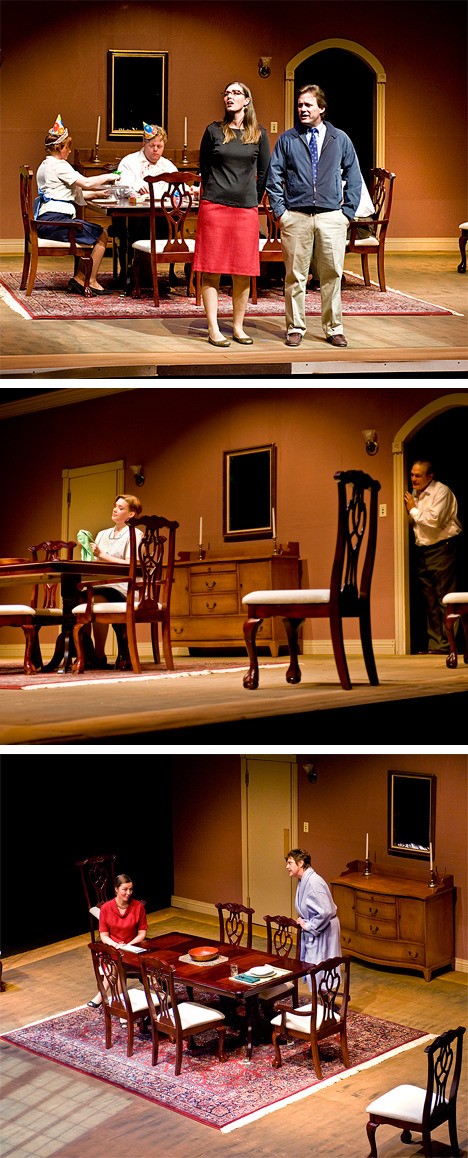It was an inanimate object that took center stage Feb. 19 at San Juan Community Theatre.
The audience, after taking their seats and adjusting to the soft, museum-like light, could see that the set was dominated by one piece: A dining room table. True, there was a dresser against the back wall, the obligatory dining room chairs, but the table was the focal point in an otherwise uncluttered environment.
This proved appropriate because, as is obvious from the title, A.R. Gurney’s play “The Dining Room” centers around the narratives inspired by such a setting.
And there were plenty to be had. Far from a prosaic comedy of manners, Gurney’s play seeks to probe into the dynamics of the declining WASP culture. Thwarted love affairs, marital aggression, birthday parties, and adolescent misdemeanor all mingle in this series of overlapping plot lines. This is a character-driven play, a play of many voices, and therefore the sparsity of the set successfully directs the attention of the audience onto the dialogue. There are no cumbersome props to distract the eye.
Two doors on the set’s back wall allow the cast to enter and exit, with characters from the next scene placing themselves in the middle of the scene going on. Subtle but exact directing ensures these overlaps were seamless, preventing the play from becoming jerky or episodic.
Each of the six actors plays up to 10 roles, moving flawlessly between ages and temperaments. Dorian Oliver shifts from sober father to sulky child with absolutely no cross over. And he is not unique in this, each cast member handles their multiple roles with great skill, the key being their attention to the physical.
Although there are slight adjustments to wardrobe, a cowboy boot replaced with a maid’s pinafore, a dinner jacket replaced with a fleece, it was the actor’s adjustments to their carriage that carried the changes in role.
Nick Zervas stands tall, emitting an energetic pomposity when playing the insulted business man. Later, pressed into a chair, he becomes a child at a birthday party through the sheer believability of his wriggling impatience.
Always, throughout these dialogue-heavy scenes, the dining room table remains central. Either as prop or source of argument, the table supports the themes of the play. Although the piece is primarily comic in tone, it carries the poignant idea of decline at its heart.
The dining room is consistently drawn upon as something now irrelevant or useless. An architect tries to persuade a client to subdivide into new, smaller rooms. A teen-ager complains that meals around the big, polished table are awkward. An old woman with the onset of dementia no longer recalls that this is her dining room. Her own table has become a foreign object to her.
However, Gurney does not seek to diagnose the family unit as a dying entity, only the restrictive values of WASP culture. There are subtle allusions to renewal that gather momentum toward the end. Always operating as metaphor, the dining room table is declared by a furniture restorer as needing to be “re-screwed, re-glued, and renewed.”
Once again, the excellent acting of the cast ensures these comments refrain from becoming saccharine or too obvious a “happy ending.” Instead, as the lights dim over the final image of a party of friends at dinner, the play seems to assert that the values of human connection are forever, it is social artifice that needs to decline.
At a Glance
— When: Thursday through Saturday, Feb. 25-27, 7:30 p.m.; Thursday through Saturday, March 4-6, 7:30 p.m. Matinee: Sunday, Feb. 28 at 2 p.m.
— Where: San Juan Community Theatre
— Tickets: Adults $21, students $11, RUSH $5. March 4 tickets: Adults $15, student $7.



